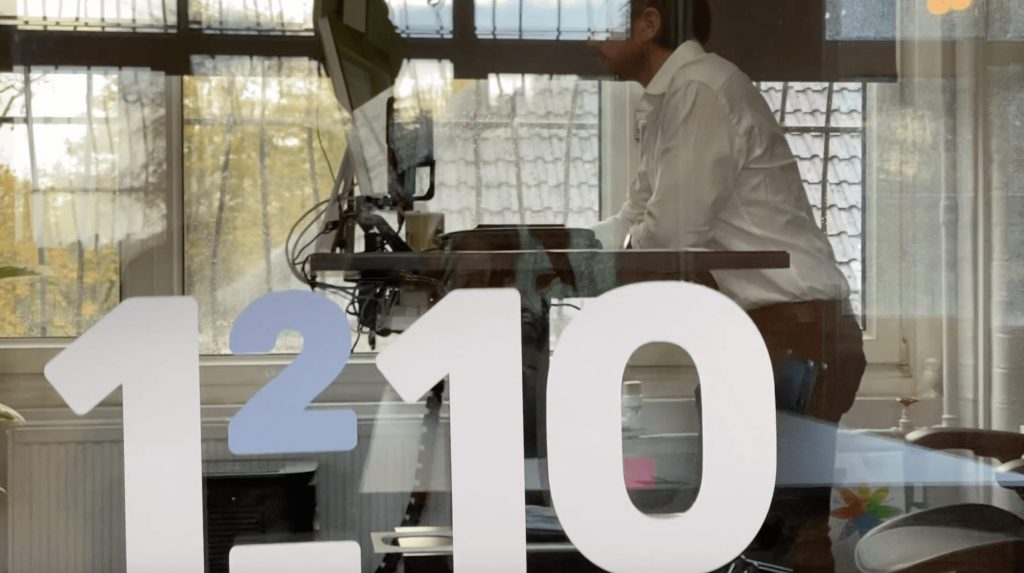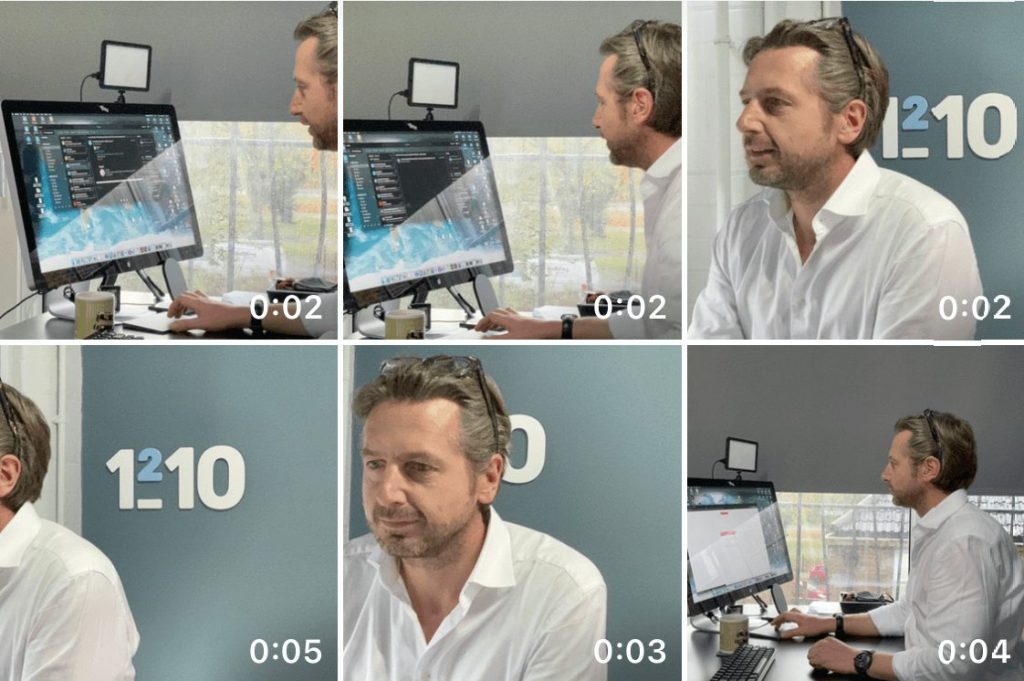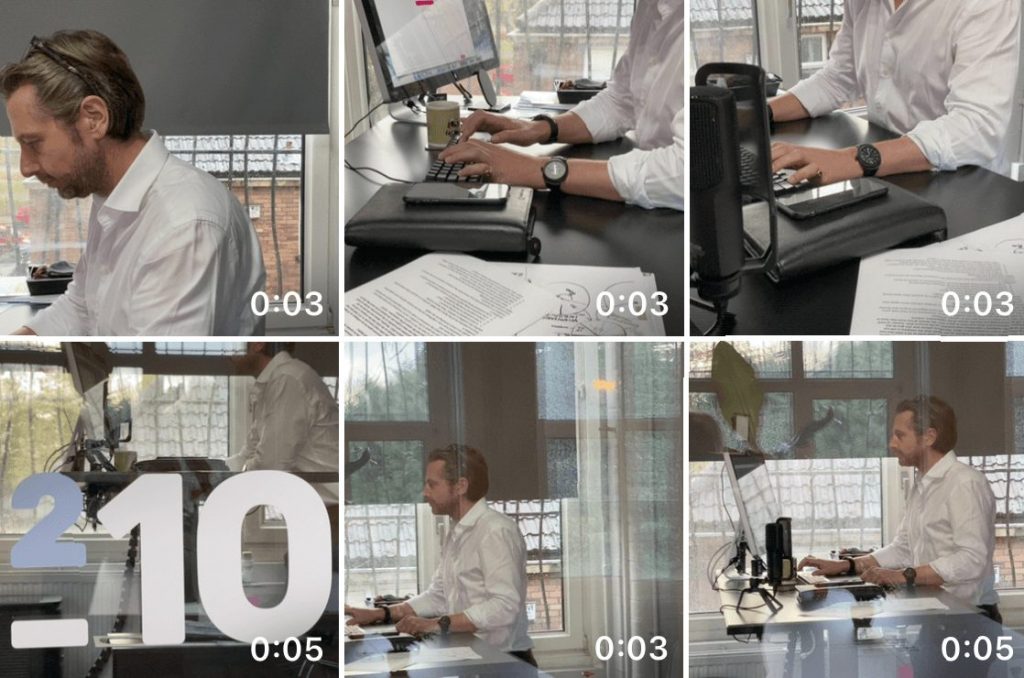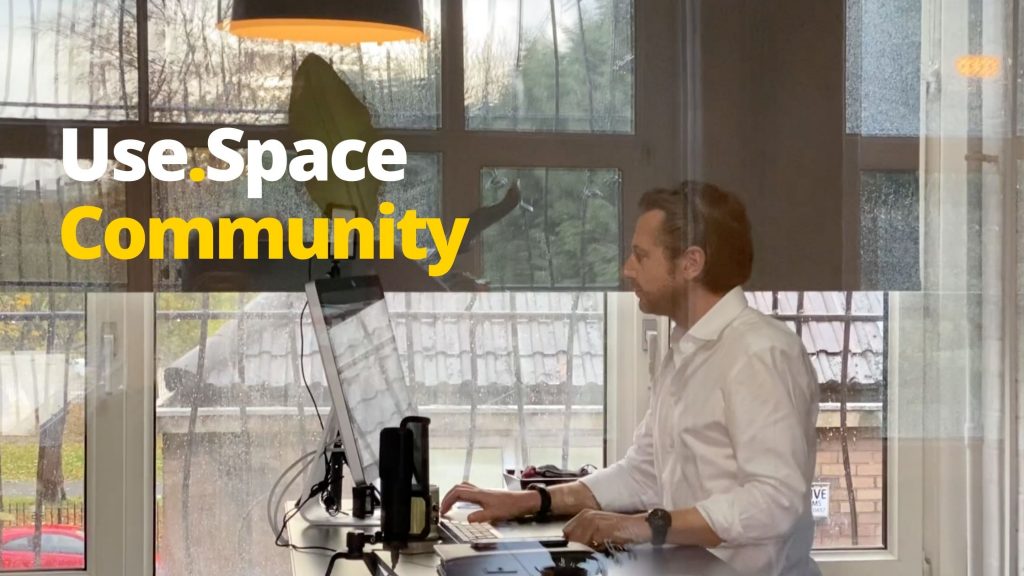With the slogan ‘crowdsource your strategy’, 1-2-10 is a consultancy specialising in mobilising organisations through the alignment of thinking and the engagement of the entire team.
Based with us here at Use.Space, 1-2-10’s Managing Partner is Phil McClennon, and here we talk to Phil about his non-traditional approach to transforming businesses, and what has inspired his way of working.
As the Managing Partner of 1-2-10, could you tell us about what it is you do?
1-2-10 is a consultancy with a purpose, one which differentiates it in the industry. Our aim is to mobilise client organisations around their strategy, in a way that ensures they fulfil their potential. When people think of consultants, they often think of those who’ll look under the bonnet of the business and create a slide deck that tells everybody what they should do. That’s the sort of traditional preconception and after those experiences, clients are often left feeling that they knew much of the advice or better already. Whereas, 1-2-10 is well, fundamentally different to that. In that, we recognise that the information the client’s business needs to get started on their journey is already known to them and their wider organisation. The 1-2-10 slogan is ‘crowdsource your strategy’ so, basically our belief is that the key to delivering the right way forward for any business is about engaging with the wider organisation in the pathfinding stage, rather than just in implementation. Ultimately, we guide the leadership and management teams through the process to collect and shape much more of the information that surrounds them, in a way that aligns everyone’s thinking. From there we support them with the tools and skills to ensure their implementation efforts get them where they need to be. That combination positions them to really take their company to the next level of performance.

How does that tie into work culture?
It certainly requires a cultural shift, because in a lot of businesses, especially larger ones, the management and leadership teams have this legacy expectation upon them, that they have to have all the answers. They’re the senior people so they need to spell out the future for everybody. The reality is, in this dynamic world we live in, it’s really hit and miss at best to have the idea that a small group of senior people already know everything they need to, to paint an accurate picture of the way forward. It’s a little bit naïve, in fairness. The pressure on those top teams is real, but where they have the confidence in the people around them and in their key teams, really fundamentally, then they’re able to make the shift to a more inclusive and collaborative approach. Making that shift also requires some confidence, in knowing that they won’t lose their way when they take the strategy conversation deeper into their organisation like this and that’s where we get involved to support them.
Our process starts with a series of visual strategy workshops that can be scaled across a business, to involve a much wider group of contributors than have ever been involved in the past. That first step initiates the feeling of ownership of the future of the business across a much wider portion of the organisation, in a way that makes all the difference when you come to deliver on the plan. It’s one thing defining a plan, but if you want to really get things done, then you’re going to rely on those same people in your organisation to change their working processes or how they serve customers and so on. That real shift in culture is about encouraging co-ownership, effectively of the future of that organisation through ‘crowdsourcing your strategy’.
So, a collective and committed vision?
Yeah, to an extent. It’s also about everybody having a contribution to the vision, to one extent or another. Imagine the difference between being told to do something from upstairs versus being told the general direction and then being asked to contribute, to bring your opinions and know-how to the table. Then when it comes back to you for implementation, you can see your own fingerprints all over the plan. Imagine the difference that would make for anyone of us, as human beings. That’s where you see the real difference from our approach, on the backend when it comes to delivery. One of the positives is that there’s a lot of things changing in the world which are reinforcing this need for a more inclusive and agile approach.

You say you don’t take a traditional approach, can you explain how?
Our whole process is different, in that we exclusively use visual methods in our collaborative workshops from start to finish. Starting with that top team to look at their portfolio and set the direction, then scaling that same process out to each corner of their business. The visual approach is the key, and the process covers every aspect of strategy, whether the client’s target is just organic growth, business model innovation or new market entry. They get to deeply understand what’s important in their own or a new marketplace or what’s interesting about competitors. If their focus is more internal, they’ll go deep into what they’re really good at and where they might need to improve. Those things can all be illustrated visually, and illustrating those things opens the doors for everybody to contribute and align around the decisions that define the plan. Of course, those ‘live’ workshops don’t look like they used to, but we were ready for the shift with the on-line tools, from where we have been through it with geographically separated teams.
Most importantly, the tools of how to do define a really powerful, clear strategy in that way aren’t rocket science. Once clients get to know them, their people can learn to do it themselves and that makes the whole approach sustainable for the years ahead.
What sort of challenges do you come up against?
In the sales phase, it often about onboarding the colleagues of our sponsor, as we often have one top leader that believes in going this new way but they need to agree that with the colleagues first of all. Here we can be dealing with people who’ve done things a certain way for decades and we’re coming in saying that there is a better way, explaining the route to the bigger prize. Quite understandably, it can feel like a leap of faith for them, they can be apprehensive until they see exactly how the results will come with the new approach.
In delivery, one key challenge is that our process requires people to be brutally self-critical. You can imagine, if your teams are full of hubris, where ‘everything is fine’ and ‘we’re the best’ is the vibe, you can go through the process of trying to understand how to improve your business and come out with nothing. You’re just going to get further confirmation that you are fine.
So, part of the drill is to really, to encourage people to talk candidly. To brutally examine the things that they are personally involved in and have responsibilities for. Even up to a point where they might overestimate some of the challenges they face and that’s not such a bad thing, because where they’ve overestimated an issue, then solving it might actually turn out to be easier than they thought. The problems come from underestimating the challenges you face, as in that case whatever you plan to do you will likely fall short of achieving what you set out to do. All that effort and only halfway to where you expected to be because at the start you weren’t critical enough. Reflection is the point, it’s healthy for people to do and it’s the same case for businesses. We structure that reflection through hard data and practical analysis, so we can illustrate the difference in real terms.

What motivates you? Do you have that moment where you really love what you do?
Yes. I think really, it’s when you see leaders get energised by this deeper level of listening. Much more than they would have done without encouraging this kind of conversation. The insights they get through our processes can be really transformational, not just in achieving what it’s designed to deliver but in the relationships between management and staff or the frontline workforce. Once you get the various stakeholder groups involved in the conversation, it creates mutual respect where people are being heard, people are contributing and ultimately on a human level, people able to influence their own future. Those experiences really energise me, you feel very fortunate to have shared them and witness the transition.
Given your area of expertise – have you had many companies looking to you for support during the pandemic?
We’ve certainly seen a shift in the types of businesses that are looking to 1-2-10 for support. Many larger and mid-market businesses are staying in low power mode, given the risks of the current uncertainty on businesses of scale. To offset that we’ve had interest from a lot more privately-owned mid-market businesses. That’s been a surprise, as that sector can be ‘consultant resistant’, but many of them have relied on the wider organisation heavily in their response to COVID and are now looking to continue with that theme.
Is there anything you’re working on at the moment that’s really exciting for you?
One really exciting opportunity at the moment is with a client who’s in the distribution business. Of course, because of their sector, they haven’t really been under the same pressure as other industries throughout recent of events. It’s a privately-owned company and their leadership team have recently done their self-reflection and they’ve got great prospects for growth. So, now for them, it’s about how to do that in a controlled way where they bring everybody with them. It’s a real positive for them, they’ve not just seen the opportunity in the market but that their first thought before they set out to realise that opportunity is ‘ok, let’s not just do this, let’s do it together’. They’ve asked us to really bring their wider team into the process and have this more inclusive approach towards creating the future. They’ve made the first steps onto the transition and that’s quite exciting. The plan is for us to support them right through their planning and set them up for an agile delivery phase.
What inspired this approach?
I’ve lived in Germany and worked very internationally whilst I was there, spending a lot of time in China, Brazil, India, US and various European states doing this kind of work. I was aligning a group of companies and many of them had already ‘had the consultants in’ to tell them what they should do. They had been handed a plan which they had taken back to the organisation to launch into delivery. All of the plans said ‘you need to do these 5 things to succeed’ but the wider organisation had turned around and said, ‘hmm yes, but you’re telling me that’s 1, 2, 3, 4, 5 but actually it’s my 9, 10, 11, 12 and 13. What about this? What about that?’. The CEO I was working for at the time really knew his stuff and we were both really open to that feedback, we knew we had to go about this differently and engage the global teams much more deeply into the analysis and planning process. That’s what we did, and we came back with a more in-depth overall plan, including sector and regional specifics that the people in those places could really own. We moved to implementation and we were blown away by the results we were getting, and it was far beyond what we’d expected in terms of achievement. Both competitively and internally. That was an enlightening experience for me and so I’ve been basically using that approach since around the world. It transcends borders, engaging with the human needs of people, involving them and offering a chance for them to influence their own destinies.
Who has been your biggest inspiration and someone you’d like to emulate?
Probably the most memorable one is my cousin Mark, who at a very early and critical stage in my life and career, taught me about self-limiting beliefs. At that time I had a mental picture that my life was pre-destined. I’d just finished an apprenticeship; I’ll go onto shifts and work in a factory and I’ll be happy and that will be fine. There’s nothing wrong with that. He just highlighted the fact that there was no reason to pigeonhole myself like that. His message was ‘if you’re prepared to pay the price in advance, then you can go and do what you want’. That’s something that I related to, so I became very focussed on improving my own capabilities, professionally and academically, with the hope of having a positive impact on the businesses around me.
So personal development is quite key to your success?
Relentlessly so. My wife would refer to me as an ‘achievement junkie’ and I’m at one with that. The important thing is, it isn’t about me. I only want to contribute to the greater good and be a force for that aim.
With so much business in your work life, what do you do to wind down?
Of course, there’s kid’s logistics and normal parenting things associated with being a Dad but beyond that, I think it’s fair to say my ‘third child’ is my Land Rover Defender. I like to tinker with cars and have always been a bit of a car nut. It’s a good way to vent. However, I’ve never had strong hand-eye co-ordination, so whilst I have a love for sports, I can’t claim to be a great sportsman. My enthusiasm has always exceeded my skill. None the less I’ve got understanding friends and we do have the occasional game of golf.
Finally, what’s the strategy for 1-2-10?
Well really, for 1-2-10, it’s continuing to demonstrate the results. To help more potential clients take that leap of faith and realise they’ll get more out of doing things this way. Continuing to build our reputation as a relatively young business.
